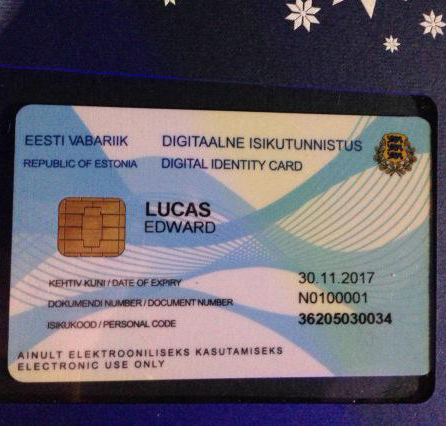Governance 2.0 – Evolution of the System or Revolution Against the System?
 In October, Estonia invited anyone, anywhere, to become an e-citizen of the Estonian digital society, open a bank account in Estonia, or start a business. They said that by the end of the year, anyone with an internet connection will be able to live their financial life in Estonia, all without being physically present.
In October, Estonia invited anyone, anywhere, to become an e-citizen of the Estonian digital society, open a bank account in Estonia, or start a business. They said that by the end of the year, anyone with an internet connection will be able to live their financial life in Estonia, all without being physically present.
The Estonian e-Residency program was officially launched on December 1.
Also read: Estonian e-Residency Program Launched
In a ceremony in the Estonian capital of Tallinn, Estonia’s President Toomas Hendrik Ilves made British journalist Edward Lucas Estonia’s first e-Resident, The Atlantic reports .
e-Residency is not a path to Estonian citizenship, and it’s not a legal residency document. It cannot be used as a travel document or a picture ID. Instead, it’s a form of supranational digital identity issued, for the first time, by a country. It’s an online identity, now with a government imprimatur.
e-Residency gives secure access to Estonia’s digital services via a smart card that can be used from anywhere in the world, and an opportunity to give digital signatures in an electronic environment. Such digital identification and signing is legally fully equal to face-to-face identification and handwritten signatures in the European Union.
The Estonian initiative is a cross between techno-utopian ambition and bureaucratic reality – a theoretically seamless, borderless digital system grafted onto a messy physical world.
 Now let’s move to the side of techno-utopian ambition. Last month, Bitcoin enthusiast Christopher Ellis developed the world’s first crypto-passport built on the blockchain technology, a mathematically produced identification paper that makes faking it next to impossible. The crypto-passport has been immediately adopted by Bitnation, a governance 2.0 platform powered by blockchain technology. The goal of Bitnation is to provide the same services that governments provide, but in a decentralized and voluntary manner, unbound by geography. Bitnation made headlines in early October 2014, when former Bitnation advisor David Mondrus and his wife Joyce became the first couple to use the Bitcoin blockchain to register their marriage.
Now let’s move to the side of techno-utopian ambition. Last month, Bitcoin enthusiast Christopher Ellis developed the world’s first crypto-passport built on the blockchain technology, a mathematically produced identification paper that makes faking it next to impossible. The crypto-passport has been immediately adopted by Bitnation, a governance 2.0 platform powered by blockchain technology. The goal of Bitnation is to provide the same services that governments provide, but in a decentralized and voluntary manner, unbound by geography. Bitnation made headlines in early October 2014, when former Bitnation advisor David Mondrus and his wife Joyce became the first couple to use the Bitcoin blockchain to register their marriage.
Bitnation’s leader Susanne Tarkowski Tempelhof thinks big. She believes that instead of complying with the traditional practices, rules and regulations of the mainstream world, we should leave all that behind and focus on the new ways of Governance 2.0. She says:
“Bitcoin didn’t ask for permission. When it reached a point of critical mass adoption, governments just had to acknowledge its existence, for better or for worse. [I] believed in changing thing from the inside. When I saw how corrupt the system was, and inefficient, and at the same time discovered what Bitcoin did without asking permission from anyone, I concluded that was the way to go ahead.”
Governments Should be Modernized or Obsoleted?
It’s interesting to compare the approaches of the Estonian government – evolution of the system – and Bitnation – revolution against the system. The former wants to modernize governments, the latter wants to obsolete governments and develop alternative forms of governance by-the-people for-the-people.
An important difference is that, at this moment, the Estonian e-Residency card has legal value, and the Bitnation crypto-passport doesn’t. At the same time, the Estonian initiative is an attempt to adapt the old institutions and nation states to the 21st century, whereas the crypto-passport represents a new decentralized approach to governance born in the 21st century, developed by-the-people for-the-people, and based on the blockchain technology that promises to decentralize the Internet and the world of finance.
The tension between the two approaches recently caused highly dramatic resignations and personal conflicts at Bitnation, which shows how they represent two essentially different ways of building the future – evolution and revolution. I think at this moment there is room for both approaches: we need pragmatic and peaceful co-existence of the old and the new (things have a tendency to get very nasty otherwise) but we also need visionary initiatives to imagine and prototype the new.
What do you think? Will Governance 2.0 platforms emerge from an evolution of the system or a revolution against the system? Or both? Comment below!
Images from Silver Tambur/Twitter, Chris Ellis and Shutterstock.